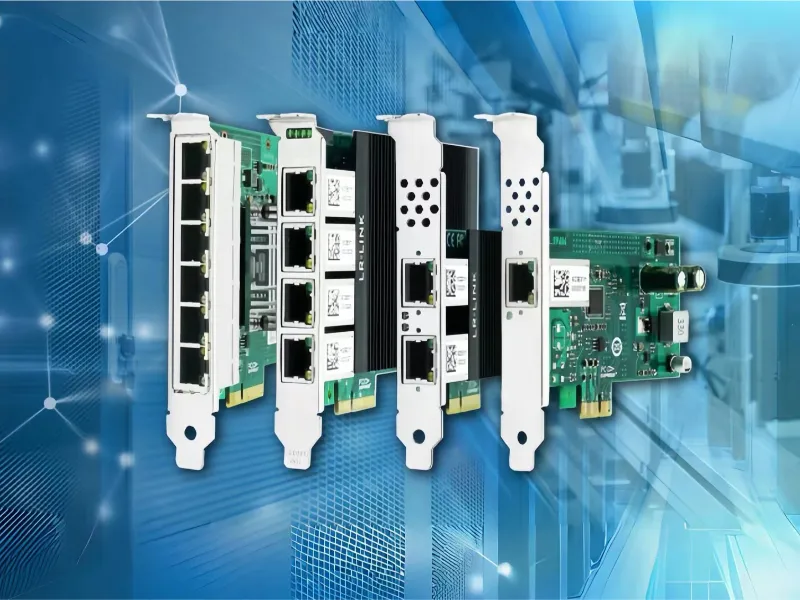- A network interface card (NIC) is typically a circuit board installed on the computer to connect to the network.
- The network interface card is responsible for sending packets to the network and receiving incoming packets from other network sources.
A network interface card (NIC), or network adapter, is a crucial component that connects computers and servers to a network. This post presents a thorough overview of NIC cards, addressing NIC functions, internal makeup, and the various types available.
What is a network interface card
A network interface card (NIC) is typically a circuit board installed on the computer to connect to the network. It works as an indispensable component for the network connection of computers. Currently, NIC cards designed as a built-in style are commonly found in most computers and some network servers. Besides, NIC cards like server NICs can also be inserted into expansion slots of devices.
Also read: What is a wireless network card and how does it work?
Components of a network interface card
The network card has the following 6 components. The controller is the central component of the NIC, responsible for processing data transmission. Boot ROM Slot allows diskless workstations to boot via the network, enhancing security and reducing costs. Interface Port connects to the network using an Ethernet cable or transceiver to transfer data signals.
Bus Interface plugs into an expansion slot to link the NIC with the computer’s motherboard. LED Indicators show the network card’s connection and activity status, providing users with an understanding of its operation. The bracket comes in standard and compact sizes for securing the NIC within the expansion slot.
Also read: What is the most widely used local area network protocol?
Functions of network interface cards
1. Data conversion: The NIC converts digital data from the computing device into signals appropriate for transmission over the network medium. Conversely, it also translates incoming signals back into digital data that the device can process. This conversion aligns with the specific requirements of the networking standard in use, such as Ethernet or Wi-Fi.
2. Data transfer: The NIC is responsible for the actual transmission and reception of data packets. It sends data packets out onto the network and receives incoming packets from other network sources. This involves encapsulating data within the proper frame structure for network communication.
3. Traffic control: To maintain optimal network performance, the NIC manages data flow by using algorithms and protocols that prevent data collisions and minimise congestion on the network. This might include implementing carrier sense and collision detection techniques in Wi-Fi or Ethernet networks.
4. Error detection and correction: As part of its responsibility to ensure the integrity of data, the NIC checks each packet for errors using checksums or other error-detection codes. If an error is detected, the NIC may request that the data be resent or attempt to correct the error through forward error correction, depending on the protocols in place.
5. Buffering: Due to the potential differences in speed between the network’s data transfer rate and the device’s processing speed, the NIC temporarily stores incoming or outgoing data packets in a buffer. This helps to align the data flow rate with the processing capabilities of the device, preventing loss of data and improving overall transmission efficiency.

